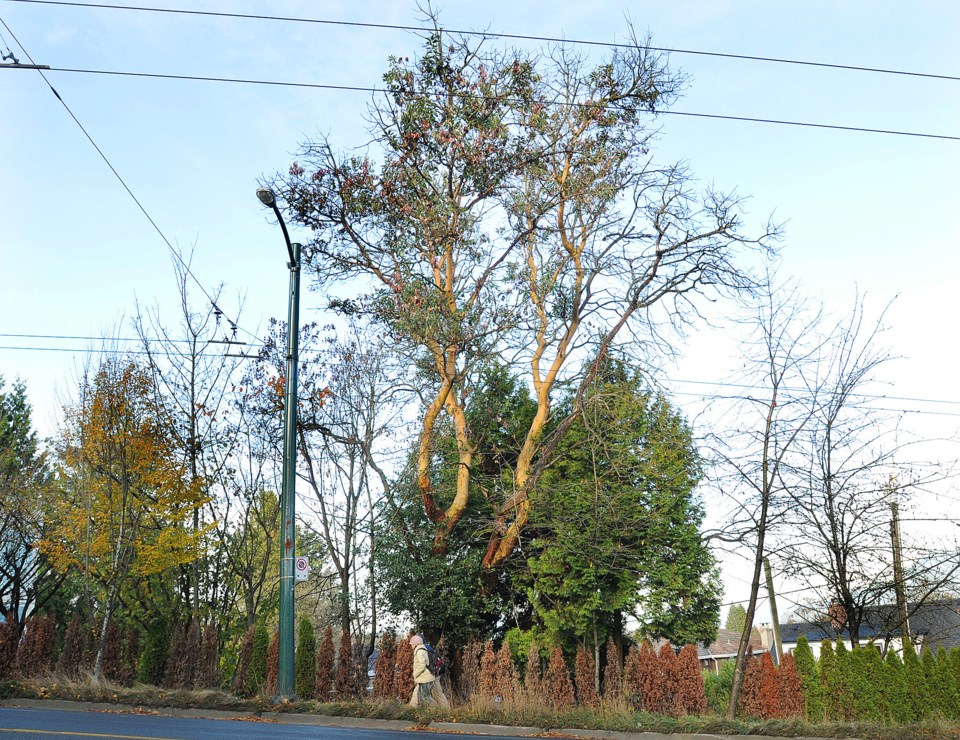Just as there is nowhere to buy gas in Gastown, there aren’t many arbutus trees in Arbutus Ridge. The City of Vancouver hosts an online database of every type of tree alongside city streets and, of the leafy West Side neighbourhood’s grand total of 5,143 trees, not one of them is an arbutus.
There’s no public record of trees on private property, but the Courier located at least one specimen of Arbutus menzeisii, Canada’s only native broad-leafed evergreen, growing in the backyard of a mansion at the corner of West 34th Avenue and Arbutus Street.
Susan Chaloub, who answered the door after an unannounced recent visit, said she was unaware of any other arbutus trees in Arbutus Ridge and, as a renter, didn’t know anything about the specific tree’s roots.
The neighbourhood was likely named for its main thoroughfare rather than the tree itself. After land surveyor Lauchlan Hamilton began running out of big shot politicians, CPR officials and businessmen to name streets after in the fast-growing city in the late 1800s, he chose to simply name many new streets after trees.
But there aren’t many of the visually striking trees anywhere else in the city. Park board operations manager Brian Quinn said a temperate rainforest isn’t their ideal habitat and that the west side of Stanley Park is one of the few places to find them.
“Vancouver isn’t really the biogeoclimatic zone that arbutus grow in because of the amount of moisture we get here,” said Quinn. “When you go on a ferry through the Gulf Islands, you see them growing all over the place because they typically grow in drier and more well-drained conditions and in mineral soil.”
The sun-loving trees, known for their reddish peeling bark, thrive in shallow, nutrient-poor rocky outcrops close to the sea, where their trunks generally split into several main branches close to the ground, creating large canopies of red, orange and chartreuse coloured twisted branches. They occasionally also grow in deeper soil such as Chaloub’s yard, where they instead grow a single tall trunk before branching farther up.
Quinn added that arbutus trees are also very difficult to transplant into non-native climates.
“We don’t plant a lot of them because they don’t transplant well. If you tried to dig one up and transport it to a new location, it wouldn’t survive. Even if you germinate and grow them in pots and transplant them, the success rate is still very low.”
afleming@vancourier.com
twitter.com/flematic


